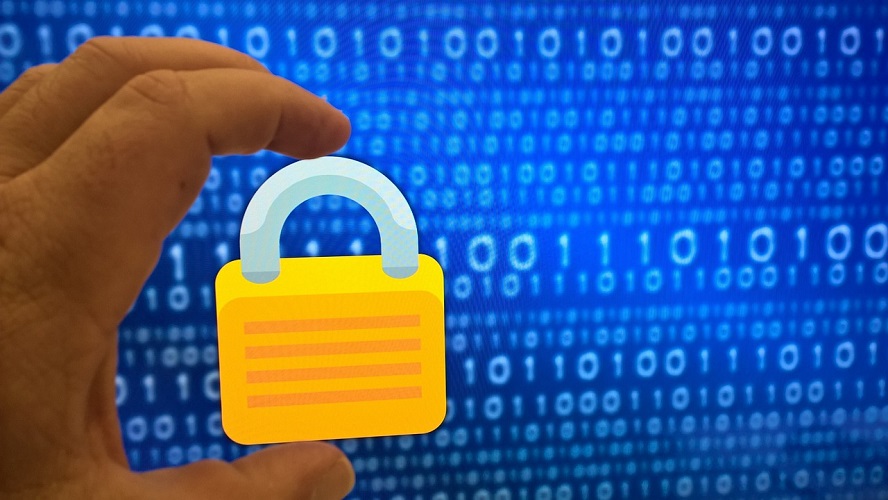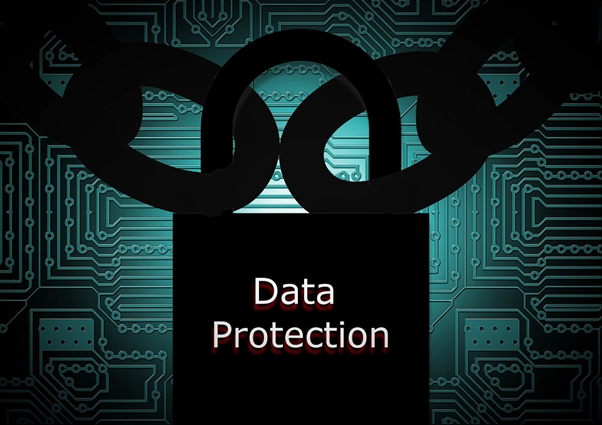Archive for the ‘Privacy’ Category
Privacy by Design and Privacy by Default in the Cloud

This post was originally published by the Cloud Security Alliance.
When we are talking about building new systems, in the context of privacy or data protection, we often hear two concepts – Privacy by Design (PbD) and Privacy by Default.
Dealing with human privacy is not something new.
We build applications that store and process personal data – from e-commerce sites, banking, healthcare, advertisement, and more.
The concept of Privacy by Design (PbD) was embraced by the GDPR (General Data Protection Regulation) in Article 5 and Article 25, the CCPA (California Consumer Protection Act) in W410-1, the LGPD (Brazilian Data Protection Law) in Article 46 and the Canadian PIPEDA (Personal Information Protection and Electronic Documents Act) in Recommendation 14.
When designing systems in the cloud, we must remember the Shared Responsibility Model.
The cloud provider is responsible for the underlining infrastructure layers and offers us many built-in security controls, but it is our responsibility as companies developing systems in the cloud, to use the security controls and design applications to meet all privacy requirements.
In this blog post, I will provide insights about how to implement those concepts when building new systems in the cloud.
What is Privacy by Design?
Privacy by Design (PbD) is based on seven “foundational principles”:
Principle 1: Proactive not reactive; preventive not remedial
To achieve this principle, we need to implement proactive security controls.
Examples of security controls that come built-in as part of major cloud providers:
- Identity and Access Management – Enforce authentication (who the persona claims to be) and authorization (what actions can be done by authenticated identity).
Examples of services: AWS Identity and Access Management (IAM), Azure Active Directory (Azure AD), Google Cloud Identity and Access Management (IAM), and Oracle Cloud Infrastructure Identity and Access Management (IAM).
- Network Protection – Enforce inbound/outbound access to services using access control mechanisms.
Examples of services: AWS Security groups, Azure Network security groups (NSG), GCP VPC firewall rules, and Oracle Cloud Infrastructure Security Lists.
- Data Encryption – Enforce confidentiality by encrypting data in transit and at rest.
Examples of services: AWS Key Management Service (AWS KMS), Azure Key Vault, Google Cloud KMS, and Oracle Cloud Infrastructure Vault.
Principle 2: Privacy as the default setting
To achieve this principle, we need to implement default settings at the application level and on the infrastructure level.
- Data minimization – When designing an application, we need to decide what is the minimum number of fields that will be stored (and perhaps processed) on data subjects in the application.
- Data location – When designing an application, we need to take into consideration data residency, by selecting the target region to store data according to relevant laws and regulations.
- Data retention – We need to set our application to keep data for as long as it is required and either delete or archive data when it is no longer needed (according to application/service capabilities).
Examples: Amazon S3 lifecycle management, Amazon EFS lifecycle management, Azure Storage lifecycle management, Google Cloud Storage Lifecycle Management, and Oracle Cloud Infrastructure Object Storage Lifecycle Management.
- Keeping Audit Trail – By default administrative actions (usually using APIs) are logged by all major cloud providers. If we want to increase log retention or include data actions (what identity did with the data), we need to manually enable it.
Examples of services: AWS CloudTrail, Azure Monitor, Google Cloud Audit Logs, and Oracle Cloud Infrastructure Logging service.
- Data Encryption – Enforce confidentiality by encrypting data in transit and at rest.
Principle 3: Privacy Embedded into Design
To achieve this principle, we need to embed privacy safeguards as part of the design.
Most data protection or data privacy regulations offers the data subjects the following rights:
- The right to be informed about the collection and use of their data.
- The right to view and request copies of their data.
- The right to request inaccurate or outdated personal information be updated or corrected.
- The right to request their data be deleted.
- The right to ask for their data to be transferred to another controller or provided to them.
When we design an application, we need to develop it to support the above data subject rights from day one, so once we need to use those functionalities, we will have them prepared, even before collecting information about the first data subject.
Principle 4: Full functionality – positive-sum, not zero-sum
To achieve this principle, we need to look at the bigger picture.
Privacy safeguards should be embedded as part of the application design, without affecting security controls or without causing performance impact on other services.
An example can be the security requirement to audit all actions in the system (for the incident response process) while keeping data privacy requirement to keep only a minimum amount of information about data subjects, not to mention the cost of keeping long-term audit log storage.
In the case of audit logs, we need to find the balance between having logs for investigation, while removing unnecessary information about data subjects, and perhaps moving old logs to an archive tier to save costs.
Principle 5: End-to-end security – full lifecycle protection
To achieve this principle, we need to make sure data is kept private throughout its entire lifecycle, from collection, storage, retirement, and disposal (when not required anymore).
When talking about data security, we must always remember to follow the CIA triad: Confidentiality, Integrity, and Availability.
The data lifecycle management contains the following:
- Data generation of the collection – We need to take into consideration automatic data classification.
- Storage – We need to take into consideration data retention and archiving, including storage capacity and archiving capabilities.
- Data use and sharing – We need to implement strong authentication and authorization processes to protect the data we store and process.
- Data archive – We should take advantage of built-in storage archive capabilities that exist with all major cloud providers.
- Data disposal – We should design mechanisms to allow us to destroy data no longer needed.
Principle 6: Visibility and transparency – keep it open
To achieve this principle, we need to create and publish a privacy policy, that will be available for our customers, per application or per website we publicly expose to the Internet.
The privacy policy should contain information about:
- The data we collect.
- The purpose for collecting data from our customers.
- If we share private data with third parties, the privacy policy should indicate it.
- The data subject rights (such as viewing which data is been collected, the right to update data subjects’ data or delete data subject data).
- How can data subjects contact us (to view data, update it, delete it, or export it)?
Visibility and transparency are crucial, and as such, the privacy policy must be kept up to date.
Principle 7: Respect for user privacy – keep it user-centric
To achieve this principle, we need to put our customers (or data subjects) first.
User experience is an important factor – how will our customers know that we are collecting private data? How will they be able to consent to data collection, view the data we are collecting, or ask us to delete it?
We need to configure our application with privacy settings enabled by default and allow our customers an easy way to opt-in (subscribe) or opt out (unsubscribe) from our service.
We need to design our system to allow customers an easy way to export their private data and support the portability of the data we collect to another third-party system in a standard readable format.
Summary
When designing applications that will store or process private data in the cloud, we should remember the shared responsibility model, together with the seven principles of privacy by design.
Some of the principles can be achieved using services offered by cloud providers, for some, we can use third-party solutions and for some we are responsible for the implementation, to comply with privacy laws or regulations and to keep our customers’ private data safe.
For any organization designing new applications in the cloud, I recommend creating teams containing representatives of both the technology department (such as DevOps, architects, and security personnel) and legal department (such as Lawyers, data privacy, compliance, and risk), to be able to design an end-to-end solution.
I invite anyone designing new applications, to read and get more information about the privacy law and regulations affecting their customers.
Disclaimer – This blog post contains my opinion. It does not replace any legal advice for complying with privacy obligations or regulations.
The Future of Data Security Lies in the Cloud

We have recently read a lot of posts about the SolarWinds hack, a vulnerability in a popular monitoring software used by many organizations around the world.
This is a good example of supply chain attack, which can happen to any organization.
We have seen similar scenarios over the past decade, from the Heartbleed bug, Meltdown and Spectre, Apache Struts, and more.
Organizations all around the world were affected by the SolarWinds hack, including the cybersecurity company FireEye, and Microsoft.
Events like these make organizations rethink their cybersecurity and data protection strategies and ask important questions.
Recent changes in the European data protection laws and regulations (such as Schrems II) are trying to limit data transfer between Europe and the US.
Should such security breaches occur? Absolutely not.
Should we live with the fact that such large organization been breached? Absolutely not!
Should organizations, who already invested a lot of resources in cloud migration move back workloads to on-premises? I don’t think so.
But no organization, not even major financial organizations like banks or insurance companies, or even the largest multinational enterprises, have enough manpower, knowledge, and budget to invest in proper protection of their own data or their customers’ data, as hyperscale cloud providers.
There are several of reasons for this:
- Hyperscale cloud providers invest billions of dollars improving security controls, including dedicated and highly trained personnel.
- Breach of customers’ data that resides at hyperscale cloud providers can drive a cloud provider out of business, due to breach of customer’s trust.
- Security is important to most organizations; however, it is not their main line of expertise.
Organization need to focus on their core business that brings them value, like manufacturing, banking, healthcare, education, etc., and rethink how to obtain services that support their business goals, such as IT services, but do not add direct value.
Recommendations for managing security
Security Monitoring
Security best practices often state: “document everything”.
There are two downsides to this recommendation: One, storage capacity is limited and two, most organizations do not have enough trained manpower to review the logs and find the top incidents to handle.
Switching security monitoring to cloud-based managed systems such as Azure Sentinel or Amazon GuardDuty, will assist in detecting important incidents and internally handle huge logs.
Encryption
Another security best practice state: “encrypt everything”.
A few years ago, encryption was quite a challenge. Will the service/application support the encryption? Where do we store the encryption key? How do we manage key rotation?
In the past, only banks could afford HSM (Hardware Security Module) for storing encryption keys, due to the high cost.
Today, encryption is standard for most cloud services, such as AWS KMS, Azure Key Vault, Google Cloud KMS and Oracle Key Management.
Most cloud providers, not only support encryption at rest, but also support customer managed key, which allows the customer to generate his own encryption key for each service, instead of using the cloud provider’s generated encryption key.
Security Compliance
Most organizations struggle to handle security compliance over large environments on premise, not to mention large IaaS environments.
This issue can be solved by using managed compliance services such as AWS Security Hub, Azure Security Center, Google Security Command Center or Oracle Cloud Access Security Broker (CASB).
DDoS Protection
Any organization exposing services to the Internet (from publicly facing website, through email or DNS service, till VPN service), will eventually suffer from volumetric denial of service.
Only large ISPs have enough bandwidth to handle such an attack before the border gateway (firewall, external router, etc.) will crash or stop handling incoming traffic.
The hyperscale cloud providers have infrastructure that can handle DDoS attacks against their customers, services such as AWS Shield, Azure DDoS Protection, Google Cloud Armor or Oracle Layer 7 DDoS Mitigation.
Using SaaS Applications
In the past, organizations had to maintain their entire infrastructure, from messaging systems, CRM, ERP, etc.
They had to think about scale, resilience, security, and more.
Most breaches of cloud environments originate from misconfigurations at the customers’ side on IaaS / PaaS services.
Today, the preferred way is to consume managed services in SaaS form.
These are a few examples: Microsoft Office 365, Google Workspace (Formerly Google G Suite), Salesforce Sales Cloud, Oracle ERP Cloud, SAP HANA, etc.
Limit the Blast Radius
To limit the “blast radius” where an outage or security breach on one service affects other services, we need to re-architect infrastructure.
Switching from applications deployed inside virtual servers to modern development such as microservices based on containers, or building new applications based on serverless (or function as a service) will assist organizations limit the attack surface and possible future breaches.
Example of these services: Amazon ECS, Amazon EKS, Azure Kubernetes Service, Google Kubernetes Engine, Google Anthos, Oracle Container Engine for Kubernetes, AWS Lambda, Azure Functions, Google Cloud Functions, Google Cloud Run, Oracle Cloud Functions, etc.
Summary
The bottom line: organizations can increase their security posture, by using the public cloud to better protect their data, use the expertise of cloud providers, and invest their time in their core business to maximize value.
Security breaches are inevitable. Shifting to cloud services does not shift an organization’s responsibility to secure their data. It simply does it better.
Why Millennials Are Blasé About Privacy

Millennials don’t seem to care that Facebook and other companies harvest their data for profit. At least that’s the premise of a recent opinion piece in the New York Post. It suggests that millennials are consigned to the fact that, in order to have the many advantages that the new tech world provides, there has to be a sacrifice. If you are a millennial, I would be interested in your reaction to this premise and others which follow.
Millennials seem more comfortable with the notion that if a product is free then you are the product, and allow themselves to be an ’’open book” for all to see. As it will be revealed later, the opinion piece opines that this is not true of previous generations who appear to be more guarded with their privacy. Of course, previous generations had fewer threats to their privacy to go along with markedly less availability to information, entertainment, and communication (just to name a few).
So it is not necessarily fair to single out the millennials as if they were some alien outliers. Although, like aliens, they come from and live in different worlds to their predecessors. I mean, book burning was non-existent before Guttenberg’s printing press printed books, and there wasn’t a need for fallout shelters until the world went nuclear. In fact, you could make a case that the dangerous, crazy world that was passed on to millennials, and that they now inherit, may make the exposure of their personal information to the public seem tame by comparison. Not to mention that heavy engagement with social media and the like is a needed distraction from modern life!
Besides, no one would have guessed some fifteen years ago that Mark Zuckerberg’s dorm room doodle would morph into the behemoth of a business model it is today – replete with its invasive algorithms. Who could have imagined that social media companies could learn our political leanings, our likes and dislikes, our religious affiliations, and our sexual orientations and proclivities? If I, or some other legal or law enforcement entity want to retrace my activities on a given day – that is easily and readily accessible from my smartphone.
As millennials blithely rollover to the tech gods when it comes to filleting themselves publicly, the article takes them (and others) to task for handwringing and breathlessly expressing surprise and outrage at Cambridge Analytica for just working with the leeway given to them. Of course, if the company had helped Hillary Clinton win the Whitehouse instead of purportedly boosting the prospects of the odious ogre, Trump, there likely wouldn’t have been the same angst – or so the piece posits.
Be that as it may, the question must be asked: what did Cambridge Analytica do that countless other companies haven’t done? I mean, why should it be treated any differently by Facebook because it’s a political firm and not an avaricious advertising scavenger? The other Silicon Valley savants – Google, Apple, and Microsoft – all monetize your information. They are eager to invite advertisers, researchers, and government agencies to discover your treasure trove of personal information through them.
And millennials, as well as those of other generations, are only too willing, it seems, to provide such information- and in massive amounts. Indeed, they seem to relish, in a race to the bottom, who can post the most content, photos, and the like. They seem to be ambivalent about the inevitable fallout. “So what?” they say, “I’ve got nothing to hide.”
The article questions if those of previous generations would be so forthcoming, citing the so-called Greatest Generation eschewing the telephone if it meant that the government could eavesdrop on their conversations with impunity. On the contrary, millennials, it would appear, view the lack of privacy and the co-opting of personal information as the price for the plethora of pleasures that the digital medium supplies.
As Wired magazine founder Kevin Kelly said in his 2016 book, The Inevitable: Understanding the 12 Technological Forces That Will Shape Our Future:
“If today’s social media has taught us anything about ourselves as a species, it is that the human impulse to share overwhelms the human impulse for privacy.“
What do you think? Is it a fair assessment of the current state of affairs?
This article was originally published at BestVPN.com.
Your Internet Privacy Is at Risk, But You Can Salvage It All

In what has to be the most ironical turn of events, companies collectively pay cybersecurity experts billions of dollars every year so that they can keep their business safe and out of prying eyes. Once they have attained the level of security and privacy they want, they turn around to infringe upon the privacy of the people.
This has been the model many of them have been operating for a while now, and they don’t seem to be slowing down anytime soon. We would have said the government should fight against this, but not when they have a hand in the mud pie too.
In this piece, we discuss the various ways these organizations have been shredding your privacy to bits, what the future of internet privacy is shaping up to be and how to take back the control of your own data privacy.
How Your Internet Privacy Is Being Violated
A lot of the simple operations you perform with the internet every day means more to some data collectors than you know. In fact, it is what they are using to make decisions on what to offer you, what to hold back from you and so much more.
Going by the available technology, here are some of the frameworks that allow the collection and use of your information.
- Big data analytics: These are mapped to certain individuals/ demographics and used to predictive models for the future.
When you hear big data, what is being referred to is a large body of data which is meant for later analysis. Via a combination of efforts from man, bot and algorithms, the large amount of data is sifted through with the sole aim of finding patterns, trends, and behaviors.
- Internet of Things: Thus, you can access live video feeds of your home from anywhere in the world. You can even have your refrigerator tell you what supplies you are running low on.
What you don’t know is that as your IoT units collect this data, they are not just feeding it to you. In fact, they are sending back a lot more than you know to the companies that developed them.
Everyday things (such as your printer, refrigerator, light, AC unit and so much more) can now be connected to an internet connection. This enables them to work with one another with the sole aim of interoperability and remote access.
-
- Machine learning: These machines are then released into data sets to practice their newfound freedom.
Guess what they do? Mine for data from almost any source they can lay hands on, rigorously analyze the data and use that to diverse ends.
Machines were taught to do more than just be machines. Instead of being given a set of commands to run with, they have now been given specialized commands to aid their learning.
The significance of The Data Collections
All of the above might look like normal procedures for the achievement of the intended purposes that these technologies bring. However, they cause more harm than good.
On the one hand, the datasets are used to pigeonhole consumers by companies.
As of the time of this writing, machine learning data is already being used by some credit card companies to determine who they should allow a credit card and who they shouldn’t. It is even more ridiculous to think this decision is based off something as simple as what type of car accessory a customer would opt for.
As if that is not enough, machine learning is approaching a place where it would soon be able to diagnose diseases. That is not the scary part. This diagnosis will be based on social media data.
The companies don’t even need to see you physically before they know what diseases you might have. Talk about prodding into the most sensitive areas of your life that you might not even have shared with family and friends.
That, and we have not even talked about how marketers will chase you around with ads based on what you’ve searched, offer suggested content based on your patterns and prevent you from seeing out of the box across the board.
Putting an End to The Nonsense
You don’t have to put up with all these. Technology is meant to be enjoyed, so you shouldn’t be punished by being exploited.
One helpful tip is to layer all your connection over a VPN. These will help make you anonymous on the network, preventing data collectors and monitors from identifying your computer with your data stream.
Your IoT devices will also benefit from a VPN if you can share one over your router. This helps to make them more secure since they cannot us a VPN otherwise.
Private browser networks such as Tor will do you a lot of good when browsing the web. If you prefer conventional browsers, though, don’t forget to install an ad blocker before you go online again. They help prevent marketers and companies from tracking you all around the web after looking at some content.
Don’t forget to switch from Google to other search engines that leave your data to you. DuckDuckGo and Qwant are some of the options on this list.
Combine all of that, and you have your shot back at decency and privacy on the internet.